Arasbaran Forest: A Haven for Nature Lovers
In the fast-paced world we inhabit, where stress and chaos often dominate, the healing power of nature is a precious gift. They say that even a brief stroll through the woods can work wonders for our mental well-being.
"Arasbaran," "Qareh Dag," "Arasbar," and "Qarah Dagh" are names of a mountainous and forested region in the northern part of East Azerbaijan Province, which can be considered among the top natural tourist destinations in the country.
It's interesting to note that more than 70,000 hectares of Arasbaran's territory are registered as a "Biosphere Reserve" by UNESCO.
Each year, Arasbaran hosts a large number of tourists and travelers from all over the world, drawn by the promise of its incredibly beautiful land, endowed with extraordinary landscapes, the best nature trails in Iran, and captivating attractions. Join us to learn more about the Arasbaran forest including its location, biosphere and history.
Arasbaran Biosphere Reserve
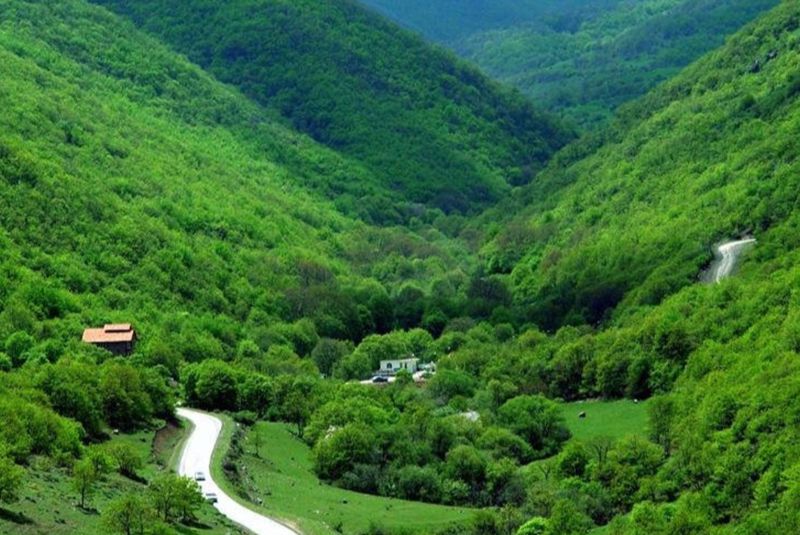
UNESCO has registered more than 70,000 hectares of Arasbaran's territory as a Biosphere Reserve. This biosphere, besides being influenced by the Mediterranean climate, is also located within the radius of the Caspian and Caucasian climates and, due to its considerable altitude, experiences different climates. Based on a 20-year average of rainfall in Kalibar County, this area receives an annual precipitation of 461 millimeters, most of which is in the form of snow, leading to the creation of various tributaries in the region and contributing to the Aras River, one of Iran's border rivers. It's worth mentioning that a part of the water supply in this area is also related to fog precipitation, which, according to it, a moist mass covers part of the area.
| Suggestion: Caspian Hyrcanian Forests
Arasbaran Forest History
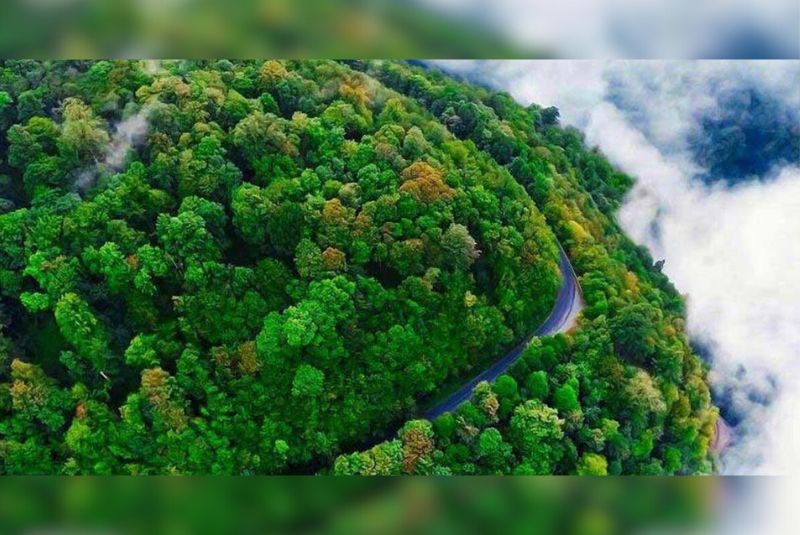
Arasbaran Forest has been known by various names throughout history, including Arasbar, Arazbar, Qareh Dagh, or Qaracheh Dagh. As these names suggest, the naming of this area is based on the Aras River (Araz) and Mount Qareh Dagh.
In addition to its beautiful landscapes, pristine nature, and diverse wildlife, Arasbaran boasts a relatively long historical background, evident from the remaining artifacts.
However, precise historical information about this area has not been provided, and to uncover its history, one must turn to the surrounding cities, namely Ahar and Kalibar.
Yaqut Hamawi, approximately eight hundred years ago, introduced the mentioned region as a place between Azerbaijan and Aran where Babak Khorramdin revolted against the Abbasid caliphate.
According to him, this area is known for its unparalleled pomegranates, figs, and grapes, which locals dry in the sun due to the thick layer of clouds that often cover the region, preventing the fruits from drying under sunlight.
Qareh Dagh has a distinct musical tradition, with its musicians (known as Ashiqs) harmonizing their music with the unique nature of Qareh Dagh. Prior to this, due to the mountainous nature of the area, its indigenous culture was well preserved. Numerous famous figures have been present in this area, including Babak Khorramdin (whose castle is located in this area), Sattar Khan, and Sheikh Shahab al-Din Ahari.
There are also many historical sites in this area, including Babak Castle, Pashto Castle, Joshin Castle, Qaqe Qaseh Castle, Sheikh Shahab al-Din Ahari Mausoleum, and Ainaloa Palace.
The churches in this region also date back approximately 100 years and are considered historical monuments, with the most famous ones being Ainol Church, Ven Church, and Napushteh Church.
Arasbaran Forest Flora and Fauna
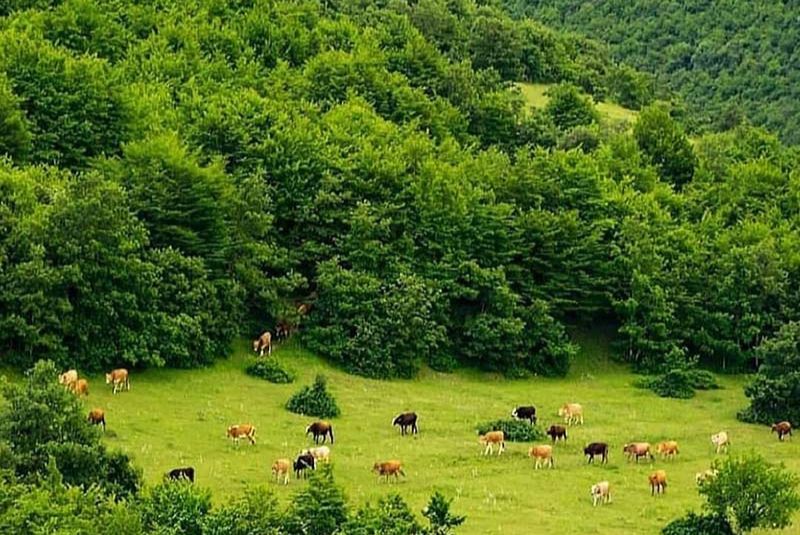
Arasbaran is currently recognized as a national park and is home to a wide variety of wildlife. However, it should be noted that due to its ruggedness and pristine landscapes, it was declared a prohibited area in 1971 and then a protected area, under supervision and protection, in 1973.
In this area, there are 220 species of birds, 38 species of reptiles, 5 amphibian species, 48 mammal species, 22 fish species, Kal, goat, roe deer, brown bear, lynx, and leopard.
The Caucasian black grouse, partridge, bustard, crow, various birds of prey, and numerous aquatic and terrestrial birds are among the birds in this area.
One of the most important missions of Arasbaran National Park is the conservation and revitalization of the Maral (a type of deer) population. Therefore, a few years ago, seven Marals were transferred from Golestan National Park to this area and released into a seven-hectare area in the Innaloo Research Center.
In addition to the diversity of wildlife in the Arasbaran region, it also benefits from a rich plant diversity. The trees in this area include oak, maple, sumac, barberry, wild pomegranate, wild apple, wild pear, and shrubs such as raspberry and juniper. The native fruit of this forest is also called Qarehqat, which is a sour and tasty fruit, and each bush yields 3 to 4 kilograms of fruit per year, with the fruits ripening in mid-summer.
Alongside various trees, Arasbaran has a high diversity of plant and fungal species, and it is said that out of the 2,400 plant species found in Azerbaijan, approximately 1,400 species belong to the forests of Arasbaran.
Identified fungal diversity in this area has also been 250 species. The truffle mushroom, which has a high black and white variety, is found abundantly in the forests of Arasbaran, especially near the village of Darilu.
It is worth mentioning that the truffle mushroom is a type of underground mushroom, and the word "denbilan" in Turkish means "swollen" or "uplifted." Since this mushroom raises the soil on itself during its growth, people find this mushroom based on this sign. This name for this type of mushroom testifies to its ancient use as food.
Fifteen percent of the country's plant species exist in this area, and 46% of them have medicinal uses, while 20% are ornamental and 17% are nutritional. Among these, 28% of the plants in this area are forage plants, 10% of this amount includes protected plants, and 5% are industrial plants.
| Discover: Iran's Top 14 National Parks Every Tourist Should Visit
Arasbaran Forest Trees
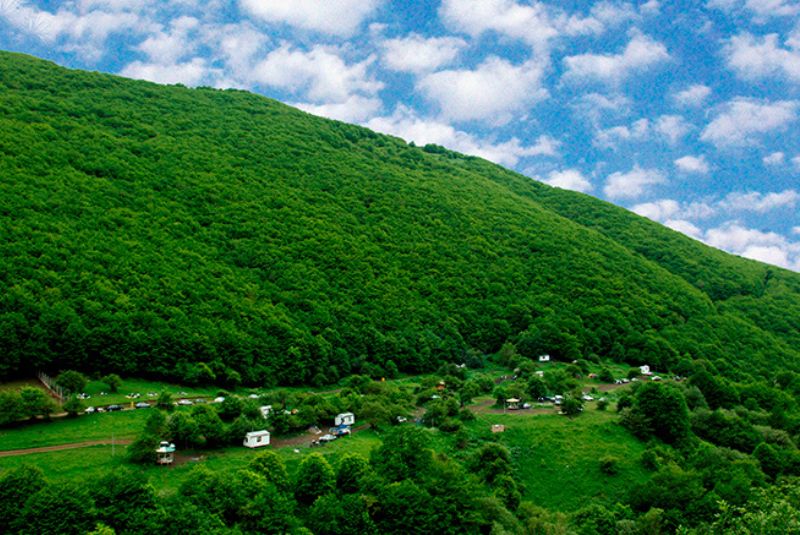
The trees in this forest exhibit a blend between the broadleaf appearance typical of northern forests and the semi-arid, steppe-like forests of the Zagros. Examples of trees in this area include oak, wild almond, elderberry, cornelian cherry, sumac, maple, wild cherry, wild apricot, and others.
Sumac is another tree in this area, mostly found in the Hurand section of Ahar, where villagers gather ripe sumac fruits during a ceremony called "Sumac Harvest Festival." After drying, they mill the fruits for culinary and dyeing purposes.
Arasbaran, aside from its hunting, economic, social, and cultural attractions, was declared a prohibited area in the years 1350 and 1352 due to its rare plant and animal species, pristine and vast landscapes, and its ruggedness and high vulnerability.
| Read more: Top Iran Fruits - Seasonal Treats & Benefits
Places to Visit in Arasbaran Forest
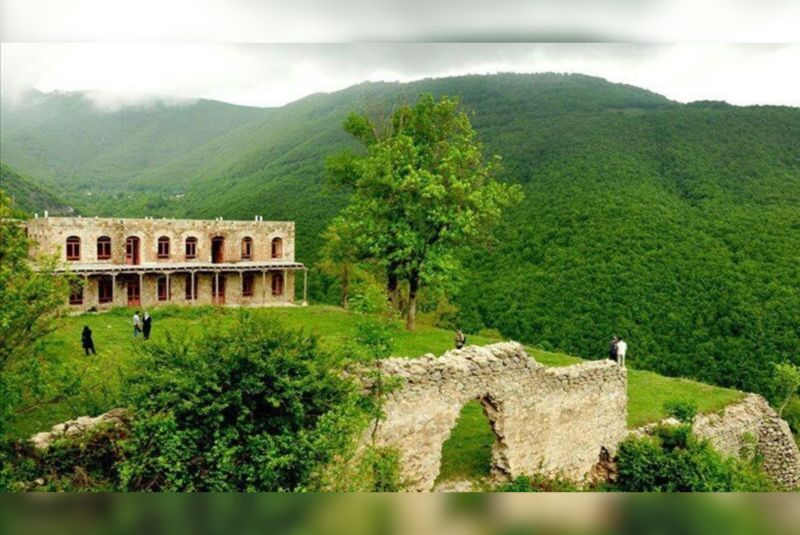
The Arasbaran region boasts valuable historical sites that attract travelers and tourists for sightseeing and recreational purposes. Among these historical sites are "Toumasiyash Castle," "Nazini Church," and "Babak Castle."
In the mountainous region of Arasbaran, there are numerous summer resorts that are considered valuable features and characteristics of this area. The presence of these summer resorts has not only endowed this region with beautiful and scenic landscapes but has also provided an ideal environment for familiarizing oneself with the culture of the nomadic tribes in this land.
Bastamam Summer Resort is one of these resorts, located between the pastures of Shujabad and Babak Castle. Additionally, other summer resorts such as the mountains of Aliabad, Chaperli, and Aghdash are also worth mentioning due to their spectacular beauty.
Approximately 23,500 nomads live in this area, and it is worth mentioning that due to the high altitude of this area, the weather is somewhat cool even on hot summer days, and at night, one must use warm clothing and blankets in the forests of Arasbaran. Travelers should consider this before traveling to this area and bring appropriate equipment with them.
| Suggestion: Kavir National Park in Iran
Arasbaran Forest Countryside
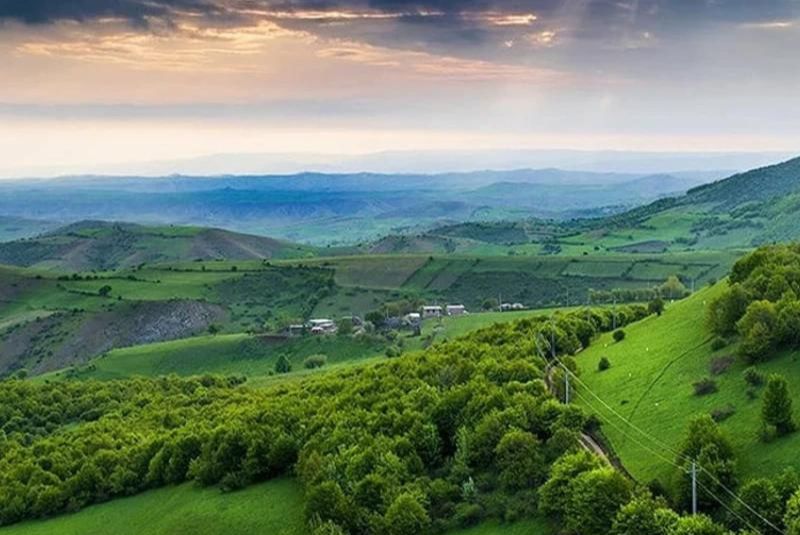
On a trip to Arasbaran, you can also take full advantage of its countryside. Arasbaran countryside is one of the most pristine areas of the Kalibar scenic areas that you should not miss. Among the best Arasbaran bungalows can be mentioned is the village of the Bastamo tribe.
Arasbaran Forest Location
The Arasbaran forest spans an area of 130,000 hectares. It lies alongside the southern banks of the Aras River, in the northern part of East Azerbaijan Province, and is considered one of the most beautiful regions in the northwest of the country. In the past, Arasbaran referred to a vast area between the Aras River from Jolfa to Moghan and the Sabalan, Bozqush, and Sahand mountains, but due to various reasons such as deforestation and similar factors, the Arasbaran forest is now limited to the borders of Kalibar, Varzeghan, and Ahar counties.
How to Get to the Arasbaran Forest
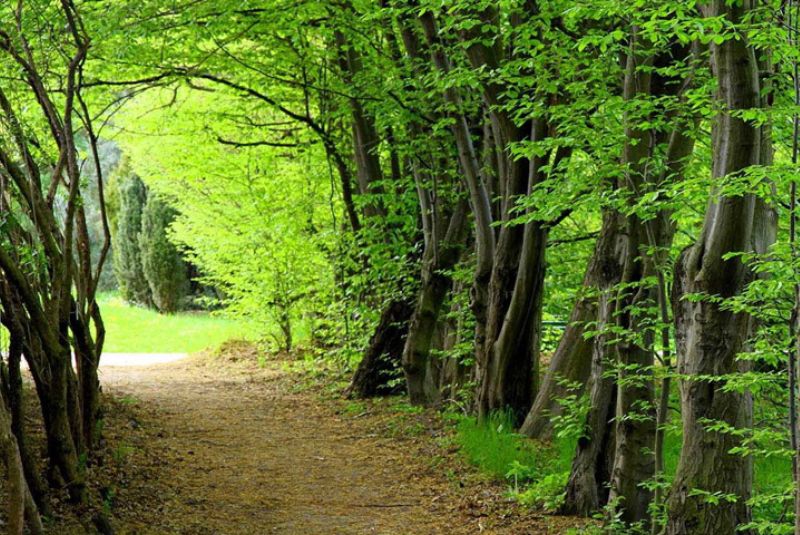
Arasbaran is located in the northern part of East Azerbaijan Province, 46 kilometers from Kalibar. It is one of the most beautiful regions in the northwest of the country and a notable attraction in Kalibar. You can get to the following by various ways including:
By Plane: Get a flight ticket to Tabriz and then, after reaching this city, go to the Arasbaran area by renting a car. (Click here to book a flight)
By Train: An exciting journey to Jolfa or Tabriz, and then again by car to Arasbaran. (Click here for train tickets)
By Bus: It's possible to reach Arasbaran by taking a bus ticket to Ahar. If you choose this option, you will cover a shorter distance to reach Arasbaran.
By Private Car: If you intend to travel with your own car, you should first take the Tehran-Tabriz freeway and choose the side road leading to Ahar. After passing through Ahar, you'll reach Kalibar, which is located southeast of the Arasbaran protected area.
The Best Time to Visit Arasbaran Forest
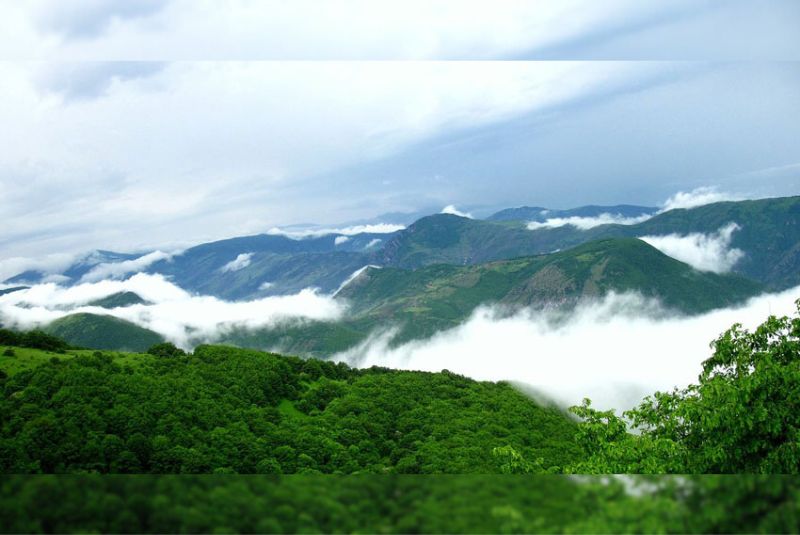
The Arasbaran region is mountainous, dry, and cold, so traveling in autumn and winter is not recommended. In spring, although the weather becomes warmer and the land and trees become lush and green, strong winds in high areas make sightseeing and recreation difficult. So, the best time to travel to Arasbaran is during the summer season.
| Read more: Iran's Four Seasons - A Country of Year-Round Delights
Bottom Line
Arasbaran Forest stands as a testament to the enduring beauty and rich biodiversity of Iran's northwestern landscape. From its towering trees to its hidden ruins and native wildlife, each aspect of this enchanting forest beckons visitors to immerse themselves in its splendor.
Its designation as a UNESCO Biosphere Reserve speaks volumes of its ecological importance. Year after year, Arasbaran welcomes a multitude of travelers, enticed by its breathtaking landscapes and captivating allure.
Share your story!
Comment below and let us know about your Experience.
Your story inspires others!


Comment
Leave a Comment